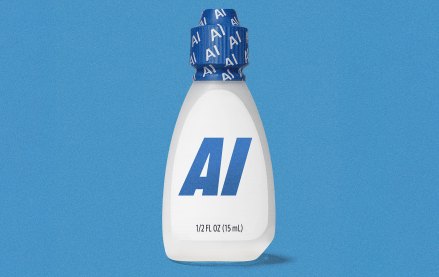
Ask any brand or agency and they’ll tell you they’re optimizing their campaigns. It’s table stakes for anyone trafficking digital ads, they’ll say. The thing is, practices vary from party to party — sometimes wildly. And so do the results. To improve the odds, agencies still need to apply the human touch to optimization.
“Optimization for our direct response campaigns are about 40 percent algorithm and 60 percent intuition,” said John Malysiak, general manager of programmatic at OMD USA. “Our clients are looking for us to not just maintain what they’ve done from a conversion standpoint but to consistently get it better.”
To get to the bottom of an emerging standard, we talked to three agency pros about how they ensure they’re making the right changes for their clients’ campaigns at the right moment. Check out their rules of thumb below.
Agencies: Prepare to make your case
When Time Warner Cable came to OMD with a direct response digital campaign, they had a very specific target in mind: recent movers. If you’re moving, you’re going to have to reset your cable. Makes sense.
But when the team at OMD dug into the results a month or so into the campaign, they overlayed a host of other audience attributes over their top converters and saw a very different opportunity. ”The people who were actually converting at a higher rate, and were converting for less cost, were folks that were actually coming off a promotion from another cable company,” said Malysiak. “This means movers weren’t really the target that was going to drive the biggest ROI.”
However, discovery was just the first step. The optimization team then had to convince their client to shift strategies. (They eventually did.) This element of persuasion is a new hurdle for agencies, a direct product of more and more clients becoming programmatically-literate.
“We almost have to vet optimization through the client. It adds an element of marketing to optimization that has never really existed before.”
For brand impact, quality’s key
“One of the most important things when you’re talking about optimizing is not really when you optimize, but what you optimize off of,” said Michael Thomas, global director of analytics at Essence. “In terms of a performance [DR] campaign, what you optimize off of is very simple: your conversion metric.”
Meanwhile, brand marketers have so far come up short in their quest for an immediate conversion metric. Common alternatives, proxies like click through, actually tend to have a negative correlation with real brand impact. So what works?
According to Thomas, brand campaign optimization involves a cocktail of factors, from geolocation to audience and context, to filters for “quality impressions.”
“Optimize out of non-brand spaces,” he said, “questionable environments that are outside your audience target, not in your geo-target, which are not in-view and are not in an appropriate frequency range. Those are not quality impressions, and so we would discount it in a formula to calculate our cost per quality impression. That is the most basic, but the best way to improve your brand campaign performance.”
No ad is an island
“One of the pitfalls is that we make decisions on optimization in a vacuum or vertical,” said OMD’s Malysiak. “We believe you can’t really make an optimization decision without having a picture of what’s happening holistically in digital.”
So when marketers are making a change to plans for search, social, display, or any of the many other channels, they need to consider how this will affect every other piece of the puzzle.
“The first step is a daily conversation between channel managers to make sure we have the whole picture of what’s happening for the entirety of the campaign.” Yet another reason why the siloes have to go.
It takes time to paint the whole picture
According to Jason Levin, MEC’s senior director of digital analytics, ad servers churn out performance reports on the publisher level. This thickens the fog around attribution, and can cloud hasty optimization decisions.
“Someone sees a hundred ads on Yahoo, and then they see one ad on ESPN.com, and the report [for those ads on ESPN] is going to show ESPN.com being the most effective ad, because that happens to be the last touchpoint,” explained Levin. Agencies that only look at those last clicks will risk cutting out crucial touchpoints. Instead, they should practice patience and wait the week (or month) necessary for full attribution results.
“That data, convergence across the hundreds of millions of cookies we have takes a little bit more time to process,” he said. But more accurate optimization is well worth the wait.
To learn more about how agencies can stay vital in the age of big data, download the second ebook in the “Own Your Advantage” series from Nielsen.
More from Digiday

Future of TV Briefing: How the future of TV shaped up in 2025
This week’s Future of TV Briefing looks back at the top topics and trends that overtook the TV, streaming and digital video industries in 2025.

Lowe’s wants to do more with AI shopping in 2026
Mylow, a shopping assistant powered by ChatGPT that launched in March, is already driving double the conversion rate for online shoppers.

‘This isn’t the old pre-roll world’: YouTube has been talking TV — now it’s selling that way
YouTube is ramping up efforts to get TV’s largest advertisers to move more of their budget into its platform.





